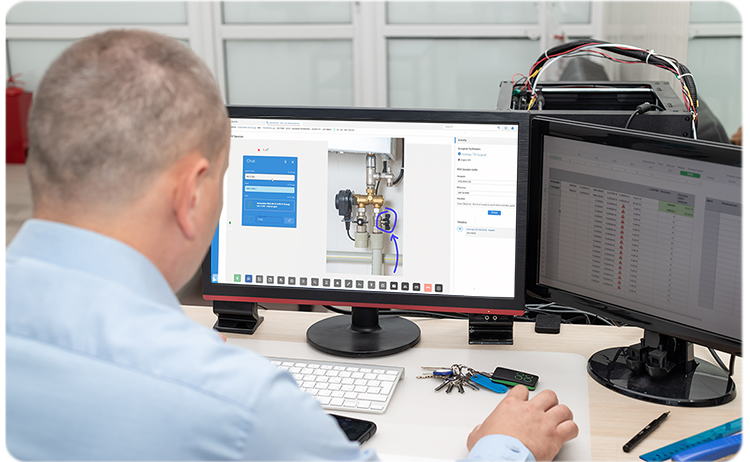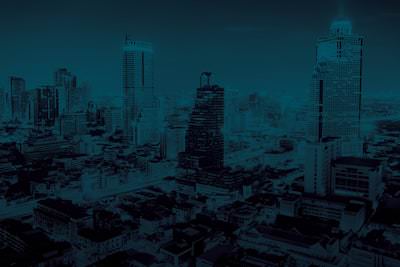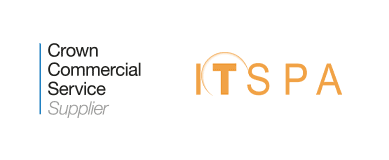In 2024 companies are seeking innovative ways to cut costs and increase efficiency with increased urgency, mainly due to global economic pressure. Emerging technologies like AI assistants, remote visual assistance, predictive diapers, and customer experience (CX) analytics are at the forefront of this revolution. Let's delve into how each of these technologies is contributing to significant cost savings for businesses in 2024.
Key points:
- AI Assistants: Increasing Efficiency and Cost Management
AI assistants have transformed the way businesses handle repetitive and routine tasks. By automating customer service through AI customer service agents, businesses have seen a remarkable reduction in operational costs. IBM reports that AI can cut customer service costs by up to 30%, a substantial saving given the annual spend of $1.3 trillion on 265 billion customer service calls. Moreover, AI's role in email management and website maintenance continues to slash labour hours significantly, boosting overall productivity.
- Remote Visual Assistance: Redefining Field Services
Remote visual assistance technology is proving to be a valuable tool for organisations providing field services. By allowing experts to guide on-site technicians remotely, this technology has drastically cut travel costs and time. Hostcomm’s research indicates up to a 25% reduction in travel expenses which increases further when used throughout an organisation. Furthermore, improved first-time fix rates and enhanced productivity, with a potential increase of up to 35% as noted by The Technology and Services Industry Association (TSIA), have led to a significant decrease in operational costs and better allocation of expert resources.
- Predictive Dialer: Streamlining Communication for Cost-Efficiency
Predictive dialers have redefined efficiency in call centres, large tele-sales teams and smaller customer service groups. By automating and optimising call schedules, these systems have increased agent talk time from 15 to 48 minutes per hour, as stated by Call Centre Helper, the leading blog site in the UK for contact centres. This translates to a productivity increase of over 200%. Additionally, the reduction in idle time and optimised resource allocation have slashed operational costs, with DMG Consulting highlighting a potential 30% reduction in labour expenses. The improved efficiency also enhances lead conversion rates, thus driving revenue.
- CX Analytics: Harnessing Data for Smarter Spending
Finally, the advent of AI-driven CX analytics has brought about a new era of customer understanding and service optimisation. Companies that have embraced this technology are seeing significant cost reductions through enhanced customer retention, more efficient customer service, and targeted marketing strategies. For instance, a 5% increase in customer retention can boost profits by 25%, according to Bain & Company. Additionally, AI's predictive capabilities in forecasting demand have been shown to cut inventory costs by 20-50%, per McKinsey's findings.
How AI Assistants can cut service costs by 30%
One of the most promising avenues for achieving this goal is the deployment of AI customer service agents or AI assistants. These sophisticated tools can significantly reduce operational expenses related to websites and email accounts. In this section, we'll explore the impact of AI assistants on cost reduction, supported by compelling statistics and percentages.
Streamlining Customer Service
Modern AI customer service agents, which have a large language model powering them can drastically improve customer service on websites. By handling routine inquiries, these agents can reduce the need for extensive human customer service teams. According to a report by IBM, businesses spend nearly $1.3 trillion on 265 billion customer service calls each year, and AI can help reduce these costs by up to 30%. This is not just a substantial cost saving but also a step towards efficiency, allowing human agents to focus on more complex and nuanced customer issues.
AI-driven personalisation on websites can lead to increased customer satisfaction and retention. Personalisation can boost sales by up to 20%, according to a report by Boston Consulting Group. By using AI to tailor the user experience, businesses not only enhance customer engagement but also drive more efficient marketing spend.

Enhancing Email Management
For email accounts, AI assistants play a crucial role in automating responses and sorting emails. A study by McKinsey found that employees spend 28% of their workweek managing email. By integrating AI-driven tools with email using Email Triage, businesses can reduce the time employees spend on email by up to 20%. This not only translates to direct cost savings in terms of man-hours but also improves overall productivity.
Automating Repetitive Tasks
The automation of repetitive tasks has a direct impact on labor costs. By reducing the time employees spend on routine tasks, businesses can allocate their human resources more effectively, focusing on strategic, creative, or more complex problem-solving tasks. According to a comprehensive study by Accenture, the integration of AI into business operations can amplify productivity by up to 40%. This is especially important for small businesses and startups, where resource optimisation is key to growth and sustainability. The increased productivity translates into substantial cost savings, as businesses can achieve more with fewer resources.
Beyond just cost savings, the automation of repetitive tasks allows businesses to re-think their strategic objectives and workforce development. Employees who are relieved from mundane tasks can be re-skilled or up-skilled to take on more value-adding roles. This not only enhances job satisfaction but also contributes to the overall innovation and competitive edge of the business.
Reduce travelling costs by 25% with remote visual assistance
Remote visual assistance technology offers significant cost reduction and efficiency improvements for organisations providing field services. This technology, which allows experts to see and guide on-site technicians or customers through a camera-enabled device, can fundamentally change how field services are delivered. Here are some key ways remote visual assistance can reduce costs, supported by statistics and percentages:
Travel Expenses and Time Reduction
Traditionally, field service requires technicians to travel to client locations, incurring substantial travel costs and time. With remote visual assistance, many issues can be resolved without the need for physical presence. According to a report by Hostcomm, organisations using remote visual assistance technology have seen up to a 25% reduction in travel costs. This not only lowers direct expenses like fuel and vehicle maintenance but also reduces the carbon footprint of the service operations.
Improved First-Time Fix Rates
A major challenge in field service is the first-time fix rate, or the ability to resolve a customer's issue on the first visit. Remote visual assistance can significantly improve these rates by ensuring the technician has the right information and guidance before and during the visit. Industry data suggests that companies using remote visual assistance have seen first-time fix rates improve by up to 22%. This leads to higher customer satisfaction and reduces the need for repeat visits, which are costly both in terms of time and resources.

Enhanced Productivity
Remote visual assistance enables more efficient use of expert technicians' time. Experts can guide multiple field technicians in different locations without the need to travel, effectively increasing their capacity. According to a study by TSIA (Technology Services Industry Association), this can lead to a productivity increase of up to 35% for senior technicians.
Decreased Training Costs
Training new technicians is a significant expense for field service organisations. Remote visual assistance allows new technicians to be guided by experts in real-time, reducing the need for extensive up-front training. As per a report by Field Service News, companies have reported reducing training costs by up to 30% through the use of this technology.
Reduced Downtime and Improved SLA Compliance
Downtime is costly for both the service provider and the client. Remote visual assistance can speed up diagnosis and resolution, thereby reducing downtime. Aberdeen Group reports that companies using visual assistance tools have seen a 21% improvement in SLA compliance rates. This improvement not only reduces the cost associated with SLA penalties but also enhances customer trust and retention.
Predictive dialers can reduce labour costs by 30%
A predictive dialer is an automated telephone dialing system that uses algorithms to predict both the availability of agents and the likelihood of calls being answered. This technology is widely used in call centres to improve efficiency and reduce costs. Let's explore how predictive dialers save costs, supported by relevant statistics and percentages:
Increased Agent Productivity
One of the primary cost-saving benefits of predictive dialers is the dramatic increase in agent productivity. Traditional manual dialing leads to a high rate of unproductive calls (busy signals, no-answers, answering machines). Predictive dialers minimise these unproductive calls by only connecting agents to calls that are answered by live individuals. According to a study by Call Centre Helper, predictive dialers can increase agent talk time from 15 minutes per hour in manual dialing to up to 48 minutes per hour. This represents more than a 200% increase in productivity, allowing the same number of agents to handle a significantly higher volume of calls.
Reduced Idle Time
Predictive dialers reduce idle time by ensuring that agents spend more time talking to potential customers and less time waiting for calls to be answered. The system dials multiple numbers simultaneously, considering the probability of answered calls and agent availability. This efficiency can decrease agent idle time by up to 25%, according to a report from Software Advice, leading to more effective use of agent time and resources.
Lower Operational Costs
With higher efficiency and productivity, call centres can manage more calls with fewer agents. This scalability means that businesses can save on operational costs such as salaries, training, and infrastructure. A study by DMG Consulting found that predictive dialers could reduce labor costs by up to 30% by optimising call centre operations.
Improved Lead Conversion Rates
Predictive dialers also improve lead conversion rates by ensuring timely follow-up with leads and customers. The faster and more efficiently agents can connect with potential clients, the higher the likelihood of successful conversions. Data from various industry sources suggests that the use of predictive dialers can improve conversion rates by up to 20-30%, translating directly into increased revenue and cost-effectiveness.
Compliance and Reduced Legal Costs
Modern predictive dialers are designed to comply with regulations like the Telephone Preference Service (TPS) in the United Kingdom. By ensuring compliance, these systems help avoid potential legal costs and fines associated with telemarketing laws. The financial impact of non-compliance can be significant, especially for repeat offenders.
Reduce CX Analytics and QA costs by at least 50%
AI-driven Customer Experience (CX) Analytics plays a crucial role in reducing costs for businesses by providing deep insights into customer behavior, preferences, and feedback. This advanced technology uses AI to enhance customer experience while simultaneously driving cost efficiency. Here are several key areas where AI CX analytics contribute to cost reduction, supported by relevant statistics and percentages:
Enhanced Customer Retention
Customer retention is significantly cheaper than acquisition. AI CX analytics helps in understanding customer needs and behavior, enabling personalised experiences that boost satisfaction and loyalty. According to a study by Bain & Company, increasing customer retention rates by just 5% can increase profits by 25% to 95%. AI-driven insights assist in identifying at-risk customers and addressing their issues promptly, reducing churn and associated costs.
Improved Customer Service Efficiency
AI CX analytics can analyse vast amounts of customer interaction data to identify common issues and queries. This analysis leads to more efficient customer service, as it helps in automating responses and optimising support resources. A report by IBM reveals that businesses using AI in their customer service have seen a reduction in response times by up to 40%, and a decrease in resolution times by up to 20%, leading to significant cost savings.

Targeted Marketing and Sales Strategies
By analysing customer data, AI CX analytics enables businesses to create more targeted and effective marketing campaigns, reducing wasted expenditure on broad, un-targeted efforts. Gartner reports that organisations that have implemented personalisation strategies see sales gains of up to 15%. This targeted approach not only saves costs but also increases the efficiency of marketing spend.
Predictive Analytics for Demand Forecasting
AI-driven predictive analytics can forecast customer demand more accurately, helping businesses manage inventory more efficiently and reduce waste. A study by McKinsey found that AI-enhanced forecasting could lead to a reduction in inventory costs by 20-50%. This efficiency not only reduces costs but also improves customer satisfaction by ensuring product availability.
Streamlined Product Development
Understanding customer preferences and trends through AI analytics can streamline product development and innovation, ensuring that resources are invested in features and products that customers truly want. Research indicates that companies using analytics for product development have seen a reduction in time-to-market by up to 33%.
Operational Efficiency
By automating various customer-related processes, AI CX analytics leads to overall operational efficiency. This includes optimising customer interactions, feedback collection, and processing. According to Accenture, AI technologies can potentially increase business productivity by up to 40%. AI CX Analytics has significantly lower operational costs (up to 50-70% less) as AI systems can process vast amounts of data with minimal ongoing expenses. Human analytics come with much higher operational costs, with ongoing expenses for salaries, benefits, and training, often increasing annually.
Conclusion
In summary, the integration of AI assistants, customer experience (CX) analytics, predictive dialers, and remote visual assistance into business operations signifies a paradigm shift towards heightened efficiency and cost-effectiveness. AI assistants streamline mundane tasks, freeing up valuable human resources for more complex and strategic initiatives. CX analytics offer unparalleled insights into customer behaviours, driving more targeted and cost-effective marketing strategies. Predictive dialers revolutionise call center operations, greatly enhancing productivity and customer engagement while significantly reducing associated costs. Lastly, remote visual assistance emerges as ‘must-have’ in field services, cutting down travel expenses and improving first-time fix rates.
The cumulative impact of these technologies is profound. By adopting these innovative solutions, businesses are not only reducing operational costs but are also positioning themselves for future growth and sustainability in an increasingly digital world. The key takeaway is clear: embracing these AI-driven technologies is no longer an option but a necessity for businesses aiming to thrive in the competitive landscape of tomorrow. This technological evolution is not just about cost savings; it's about redefining business efficiency and unlocking new potentials for growth and customer satisfaction.














